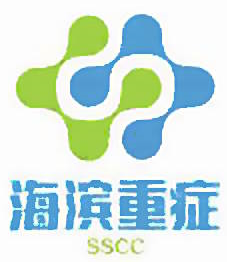 The Burden of Brain Hypoxia and Optimal Mean Arterial Pressure in Patients With Hypoxic Ischemic Brain Injury After Cardiac Arrest
The Burden of Brain Hypoxia and Optimal Mean Arterial Pressure in Patients With Hypoxic Ischemic Brain Injury After Cardiac Arrest
# The Burden of Brain Hypoxia and Optimal Mean Arterial Pressure in Patients With Hypoxic Ischemic Brain Injury After Cardiac Arrest
Mypinder S Sekhon (opens new window) 1 (opens new window), Peter Gooderham (opens new window) 2 (opens new window), David K Menon (opens new window) 3 (opens new window), Penelope M A Brasher (opens new window) 4 (opens new window), Denise Foster (opens new window) 1 (opens new window), Danilo Cardim (opens new window) 5 (opens new window), Marek Czosnyka (opens new window) 3 (opens new window), Peter Smielewski (opens new window) 3 (opens new window), Arun K Gupta (opens new window) 3 (opens new window), Philip N Ainslie (opens new window) 6 (opens new window), Donald E G Griesdale (opens new window) 1 (opens new window) 4 (opens new window) 5 (opens new window)
Affiliations expand
PMID: 30889022
# Abstract
Objectives: In patients at risk of hypoxic ischemic brain injury following cardiac arrest, we sought to: 1) characterize brain oxygenation and determine the prevalence of brain hypoxia, 2) characterize autoregulation using the pressure reactivity index and identify the optimal mean arterial pressure, and 3) assess the relationship between optimal mean arterial pressure and brain tissue oxygenation.
Design: Prospective interventional study.
Setting: Quaternary ICU.
Patients: Adult patients with return of spontaneous circulation greater than 10 minutes and a postresuscitation Glasgow Coma Scale score under 9 within 72 hours of cardiac arrest.
Interventions: All patients underwent multimodal neuromonitoring which included: 1) brain tissue oxygenation, 2) intracranial pressure, 3) jugular venous continuous oximetry, 4) regional saturation of oxygen using near-infrared spectroscopy, and 5) pressure reactivity index-based determination of optimal mean arterial pressure, lower and upper limit of autoregulation. We additionally collected mean arterial pressure, end-tidal CO2, and temperature. All data were captured at 300 Hz using ICM+ (Cambridge Enterprise, Cambridge, United Kingdom) brain monitoring software.
Measurements and main results: Ten patients (7 males) were included with a median age 47 (range 20-71) and return to spontaneous circulation 22 minutes (12-36 min). The median duration of monitoring was 47 hours (15-88 hr), and median duration from cardiac arrest to inclusion was 15 hours (6-44 hr). The mean brain tissue oxygenation was 23 mm Hg (SD 8 mm Hg), and the mean percentage of time with a brain tissue oxygenation below 20 mm Hg was 38% (6-100%). The mean pressure reactivity index was 0.23 (0.27), and the percentage of time with a pressure reactivity index greater than 0.3 was 50% (12-91%). The mean optimal mean arterial pressure, lower and upper of autoregulation were 89 mm Hg (11), 82 mm Hg (8), and 96 mm Hg (9), respectively. There was marked between-patient variability in the relationship between mean arterial pressure and indices of brain oxygenation. As the patients' actual mean arterial pressure approached optimal mean arterial pressure, brain tissue oxygenation increased (p < 0.001). This positive relationship did not persist when the actual mean arterial pressure was above optimal mean arterial pressure.
Conclusions: Episodes of brain hypoxia in hypoxic ischemic brain injury are frequent, and perfusion within proximity of optimal mean arterial pressure is associated with increased brain tissue oxygenation. Pressure reactivity index can yield optimal mean arterial pressure, lower and upper limit of autoregulation in patients following cardiac arrest.
